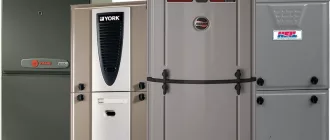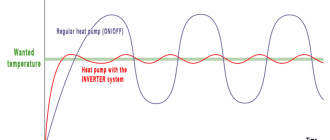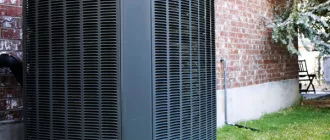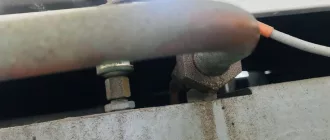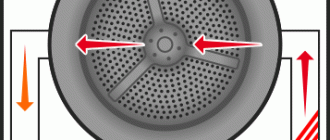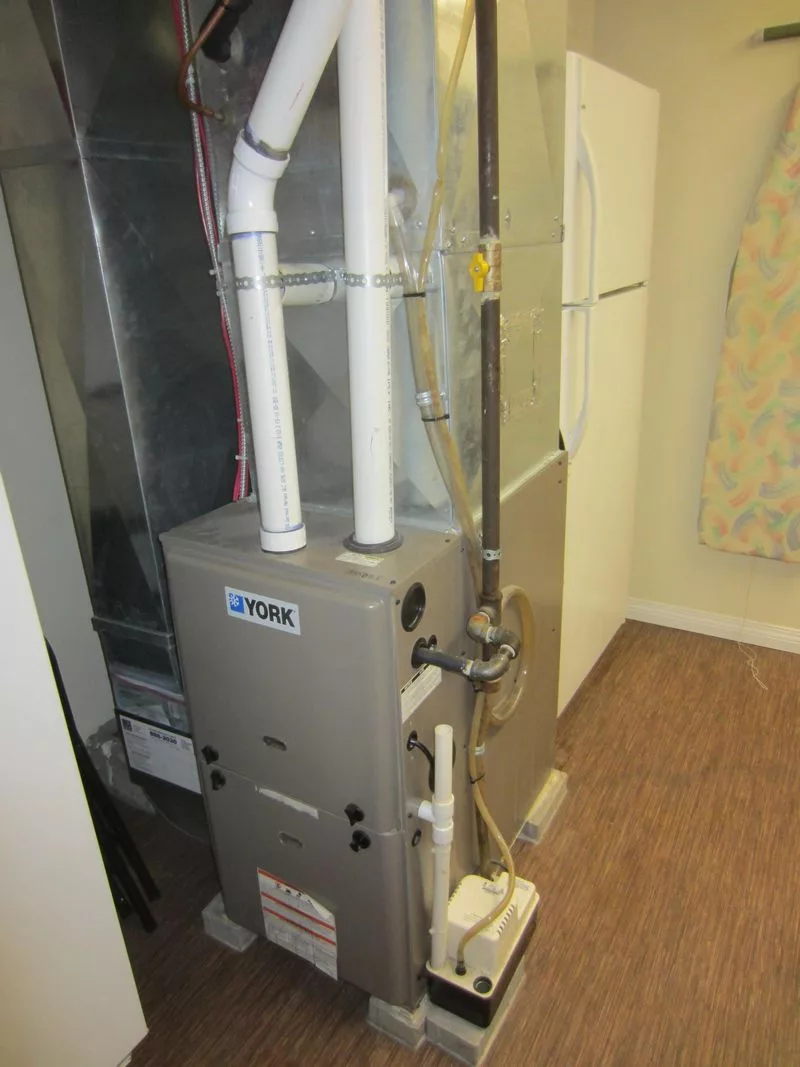
An Introduction to the Condensing Furnace: Efficiency and Functionality
Welcome to an introduction to the condensing furnace, an HVAC system that offers improved efficiency and functionality for your home or business. As energy usage becomes an increasingly important concern, understanding how your heating system operates and how it affects your energy consumption is crucial. In this article, we will explore the concept of condensing furnaces and how they can help you save money while reducing your carbon footprint.
A condensing furnace is a type of heating system that operates by extracting heat from the combustion of fuel and transferring it into your living or working space. Unlike conventional furnaces, which release wasted heat into the atmosphere, condensing furnaces utilize advanced technology to capture and reuse this heat, resulting in higher efficiency ratings. This means that more of the energy produced by the furnace is used to heat your space, leading to lower energy bills and less environmental impact.
One of the key features of a condensing furnace is its ability to condense water vapor from the combustion process. This feature allows the furnace to capture additional heat that would otherwise be lost. By condensing the water vapor, the furnace can extract even more energy from the fuel, further increasing its efficiency. Additionally, the condensing process reduces the temperature of the exhaust gases, allowing for venting through PVC pipes instead of metal chimneys. This not only simplifies installation but also eliminates the risk of chimney corrosion.
Understanding Efficiency and Functionality
The introduction of the condensing furnace has revolutionized the HVAC industry, providing homeowners with improved energy efficiency and functionality in their heating systems. This innovative technology offers numerous advantages over traditional furnaces, helping to lower energy costs and reduce environmental impact.
One key feature of a condensing furnace is its high efficiency. Unlike non-condensing furnaces, which waste a significant amount of heat energy, condensing furnaces are designed to extract as much heat as possible from the combustion process. This is achieved through the use of a secondary heat exchanger, which captures the heat from the exhaust gases and transfers it back into the heating system.
By maximizing heat extraction, condensing furnaces can achieve efficiency ratings of up to 98%, significantly higher than non-condensing units. This means that more of the energy consumed by the furnace is converted into usable heat, resulting in lower energy bills and increased comfort for homeowners.
In addition to their high efficiency, condensing furnaces also offer improved functionality. These furnaces are equipped with advanced controls and sensors that allow for precise temperature regulation and airflow management. This ensures that the heating system operates at its optimal performance level, providing consistent and even heat distribution throughout the home.
Furthermore, condensing furnaces are often equipped with variable-speed blower motors, which allow for greater flexibility in controlling airflow. This feature not only improves comfort but also helps to reduce noise levels, as the blower can operate at lower speeds when heating demands are lower.
Another advantage of condensing furnaces is their ability to work well with other energy-efficient technologies, such as smart thermostats and zoning systems. These integration options allow homeowners to further optimize their energy usage and customize their heating preferences based on their specific needs.
In conclusion, the introduction of condensing furnaces has brought significant improvements in both efficiency and functionality to the HVAC industry. With their high efficiency ratings and advanced features, these furnaces offer homeowners a cost-effective and environmentally friendly solution for heating their homes.
The Benefits of a Condensing Furnace
Introduction:
A condensing furnace is a type of HVAC system that offers several advantages in terms of energy efficiency and functionality. Traditionally, furnaces have been less efficient, causing homeowners to pay higher energy bills. However, with the introduction of condensing furnaces, homeowners now have the opportunity to save money while enjoying optimal comfort.
Efficiency:
One of the key benefits of a condensing furnace is its high level of efficiency. These furnaces are designed to capture and utilize the heat energy that is typically wasted in traditional furnaces. By doing so, condensing furnaces can achieve efficiency levels of 90% or higher, compared to the 70-80% efficiency of older models. This increase in efficiency translates to significant energy savings and lower utility bills for homeowners.
Functionality:
Another advantage of a condensing furnace is its enhanced functionality. These furnaces use a secondary heat exchanger to extract additional heat from the combustion gases, allowing them to operate more efficiently and effectively. As a result, condensing furnaces can provide more consistent and comfortable heating throughout the home. Additionally, some models may offer variable speed motors and multi-stage burners, allowing for precise temperature control and improved air circulation.
The condensing process:
The name “condensing furnace” comes from the condensing process that takes place within the HVAC system. When the combustion gases cool down, they release their heat energy and condense into water vapor. This water vapor is then drained away through a condensate line. The condensing process not only increases efficiency but also helps to remove additional moisture from the air, making the indoor environment more comfortable.
To summarize, a condensing furnace offers numerous benefits to homeowners. The introduction of this type of HVAC system has revolutionized the industry by providing increased efficiency and improved functionality. With its ability to capture and utilize heat energy that would otherwise be wasted, a condensing furnace not only saves homeowners money but also contributes to a more comfortable and environmentally friendly home.
How Does a Condensing Furnace Work?
A condensing furnace is a type of furnace that is designed to maximize energy efficiency and reduce energy consumption. It works by recovering and using the heat that would otherwise be wasted in a traditional furnace.
The functionality of a condensing furnace is based on the principle of condensation. In a traditional furnace, the flue gas, which contains combustion byproducts, is released into the atmosphere. This means that a significant amount of heat is lost. However, in a condensing furnace, the flue gas is cooled down to the point where water vapor in the gas condenses. This releases additional heat, which is then used to warm up the air that is circulated throughout the house.
The key component that enables this condensation process is the heat exchanger. The heat exchanger is made of specially designed materials that allow for efficient heat transfer. It is responsible for transferring the heat from the burnt combustion gases to the cool air that is being circulated.
In addition to the condensation process, a condensing furnace also incorporates other features to improve its efficiency. These include variable speed blowers, which adjust the airflow based on the heating demand, and electronic ignition systems, which eliminate the need for a pilot light.
The efficiency of a condensing furnace is measured by its Annual Fuel Utilization Efficiency (AFUE) rating. A high AFUE rating indicates that the furnace is able to convert a large percentage of fuel into usable heat.
In conclusion, the introduction of condensing furnaces has revolutionized the HVAC industry by providing a more efficient and environmentally friendly heating solution. By utilizing the condensation process and incorporating other energy-saving features, condensing furnaces can greatly improve energy usage and reduce utility costs for homeowners.
The Role of Heat Exchangers
In the efficiency and functionality of a condensing furnace, heat exchangers play a crucial role. An introduction to the condensing furnace would be incomplete without understanding the importance of these components.
A heat exchanger is designed to transfer heat between two fluids without them coming into direct contact with each other. In the case of a condensing furnace, the two fluids involved are the combustion gases and the air being heated.
The combustion gases produced during the combustion process contain a significant amount of heat energy. The heat exchanger’s function is to capture as much of this heat as possible before the gases are expelled from the furnace through the flue.
Inside the heat exchanger, the combustion gases flow through a series of small tubes or passages. The air being heated is passed over the outside of these tubes or passages. The heat from the combustion gases transfers through the walls of the tubes to the air, warming it up before it is distributed throughout the house.
This heat transfer process is made possible by the design of the heat exchanger. It is typically constructed from materials that are good conductors of heat, such as metal. These materials allow for efficient transfer of heat from the combustion gases to the air.
Efficiency is key when it comes to the functionality of a condensing furnace and heat exchangers play a crucial role in achieving this. By effectively capturing and transferring heat, heat exchangers allow the furnace to operate at a higher level of efficiency, meaning less energy is wasted.
Additionally, heat exchangers also help prevent any contaminants or byproducts of combustion from entering the air that is being heated. They act as a barrier, ensuring that only clean, warm air is distributed throughout the house.
Overall, the role of heat exchangers in a condensing furnace is to maximize efficiency by capturing and transferring heat from combustion gases to the air being heated, while also maintaining air quality standards. Understanding their importance is essential in fully comprehending how this HVAC system can improve energy usage.
Condensing Furnace vs. Traditional Furnace
The introduction of the condensing furnace brought a significant improvement to the functionality and efficiency of HVAC systems. Compared to the traditional furnace, the condensing furnace offers several advantages that enable homeowners to enhance their energy usage and minimize utility costs.
A condensing furnace operates by utilizing the heat of the flue gases that are generated during the combustion process. Unlike a traditional furnace, which releases these gases directly into the atmosphere, a condensing furnace maximizes the heat transfer by condensing the water vapor contained in the flue gases. This condensation process not only provides additional heat energy but also removes harmful byproducts that would otherwise be released into the air.
One of the key benefits of a condensing furnace is its high efficiency. Traditional furnaces typically have an efficiency rating of around 80%, meaning that 20% of the heat produced is wasted. In contrast, condensing furnaces can reach efficiency levels of up to 98%, resulting in significant energy savings. With advancements in technology, condensing furnaces have become more affordable and accessible to homeowners, making them an attractive alternative to traditional furnaces.
In addition to their efficiency, condensing furnaces also offer improved comfort and air quality. The condensation process removes moisture from the flue gases, reducing the humidity levels in the home. This not only enhances comfort but also helps prevent the growth of mold and mildew. Furthermore, the removal of harmful byproducts through condensation improves indoor air quality, creating a healthier living environment for occupants.
While the initial cost of a condensing furnace may be higher compared to a traditional furnace, the long-term energy savings and improved functionality make it a worthwhile investment. With its higher efficiency, ability to enhance indoor air quality, and advanced condensing technology, a condensing furnace is a superior choice for homeowners who prioritize energy efficiency and want to reduce their carbon footprint.
In conclusion, the introduction of the condensing furnace revolutionized the HVAC industry by offering improved functionality and efficiency compared to traditional furnaces. Through its ability to maximize heat transfer, enhance air quality, and minimize energy wastage, a condensing furnace provides homeowners with a superior HVAC solution that not only saves them money but also contributes to a greener and more sustainable future.
Energy Savings with a Condensing Furnace
When it comes to energy efficiency and functionality, an introduction to the condensing furnace is necessary. With the advancements in HVAC technology, the condensing furnace has become a popular choice for homeowners looking to lower their energy usage and save on utility bills.
The main advantage of a condensing furnace is its ability to extract more heat from the combustion process compared to a conventional furnace. This is accomplished by capturing and utilizing the latent heat that is typically wasted in traditional furnaces. By recovering this heat and transferring it back into the system, a condensing furnace can achieve an AFUE (Annual Fuel Utilization Efficiency) rating of over 90%, which means that more than 90% of the fuel consumed is converted to usable heat.
One of the key features of a condensing furnace is its secondary heat exchanger. This exchanger allows the furnace to extract additional heat from the flue gases before they are vented out of the system. The condensation of these gases releases even more heat energy, which is then used to heat the air that is circulated throughout the home. This process not only increases the efficiency of the furnace, but also reduces the amount of fuel required to maintain a comfortable temperature, resulting in significant energy savings.
In addition to its energy-saving capabilities, a condensing furnace also offers improved comfort and indoor air quality. The combination of its advanced blower motor technology and two-stage or modulating burner operation allows for more precise control of temperature and airflow. This results in more consistent temperatures throughout the home and a reduction in hot and cold spots.
Furthermore, condensing furnaces are also equipped with advanced air filtration systems that can capture and remove a higher percentage of airborne particles, such as dust, pollen, and pet dander. This can greatly improve indoor air quality and reduce the occurrence of respiratory issues and allergies.
In conclusion, an introduction to the condensing furnace highlights its efficiency and functionality. By utilizing advanced technology to extract more heat from the combustion process and offering improved comfort and indoor air quality, a condensing furnace can provide significant energy savings for homeowners. Investing in this type of HVAC system is not only beneficial for the environment, but also for reducing energy costs in the long run.
Choosing the Right Size for Your Home
When it comes to an introduction to the condensing furnace, understanding the functionality and efficiency is crucial. However, another important aspect to consider is choosing the right size for your home.
An improperly sized furnace can lead to inefficiencies and increased energy usage. If the furnace is too small, it will struggle to heat your home adequately, resulting in cold spots and discomfort. On the other hand, if the furnace is too large, it will cycle on and off frequently, wasting energy and causing wear and tear on the system.
To determine the right size for your home, it’s important to consider factors such as the square footage, insulation, and climate zone. A professional HVAC technician can perform a load calculation to accurately determine the appropriate furnace size. This calculation takes into account the unique characteristics of your home and ensures optimal efficiency and functionality.
It’s also important to note that a larger furnace doesn’t necessarily mean better heating performance. Oversized furnaces can result in short cycling, which reduces efficiency and increases energy costs.
By choosing the right size for your home, you can maximize the efficiency and functionality of your condensing furnace. This will not only improve your energy usage but also provide consistent and comfortable heating throughout your home.
Installation Considerations for Condensing Furnaces
Installing a condensing furnace requires careful consideration to ensure its optimal functionality and efficiency. Here are some key factors to keep in mind during the installation process:
1. Proper Venting: Condensing furnaces produce highly corrosive condensation. It is essential to install a venting system that can handle these acids and direct them away from the furnace. This can help prevent damage to the furnace and maintain its efficiency.
2. Sizing: Correctly sizing the condensing furnace is crucial for optimal performance. Undersized furnaces may struggle to meet the heating demands of the space, resulting in reduced efficiency and increased energy consumption. On the other hand, oversized furnaces can lead to short cycling and unnecessary wear and tear on the system.
3. Location: Choosing the right location for the condensing furnace is important for both functionality and safety. It should ideally be installed in an area with appropriate ventilation to ensure proper combustion and exhaust. Additionally, the furnace should be easily accessible for maintenance and repairs.
4. Condensate Drainage: Proper condensate drainage is essential for the condensing furnace to operate efficiently. It is important to plan for a suitable drainage system that can effectively remove the condensation produced by the furnace without causing any damage to the surrounding area.
5. Ductwork: The existing ductwork should be thoroughly inspected and evaluated before installing a condensing furnace. Any leaks or deficiencies in the ducts can lead to energy loss and reduced efficiency. Proper sealing and insulation of the ductwork can help maximize the performance of the condensing furnace.
6. Professional Installation: Due to the complexity of the installation process, it is highly recommended to hire a professional HVAC technician to install a condensing furnace. They have the expertise and knowledge to ensure proper installation, venting, and overall functionality.
Considering these factors during the installation of a condensing furnace can help maximize its efficiency, functionality, and overall performance. It is crucial to consult with a qualified HVAC professional to ensure the installation is done correctly and in compliance with local codes and regulations.
Maintaining Your Condensing Furnace
Proper maintenance is essential for the efficiency and functionality of your condensing furnace. By following a few simple steps, you can ensure that your furnace operates optimally and lasts for years to come.
Firstly, it is important to regularly clean or replace the furnace filter. The filter helps to trap dust, dirt, and other particles, preventing them from entering the furnace and compromising its performance. To clean the filter, simply remove it from the furnace and gently vacuum or wash it with mild soap and water. If the filter is damaged or excessively dirty, it is advisable to replace it with a new one to maintain optimal airflow.
In addition to the filter, the condensing furnace’s blower motor and fan blades should also be inspected and cleaned regularly. These components can accumulate dust and debris over time, which can hinder their efficiency. Using a soft brush or cloth, gently remove any build-up from the motor and blades to ensure smooth operation.
Another crucial aspect of maintaining your condensing furnace is keeping the combustion area clean. Over time, the burner assembly and heat exchanger can develop soot or rust, hindering their performance. It is recommended to have a professional technician inspect and clean these components annually to prevent any issues.
Furthermore, it is important to check and clean the condensate drain line regularly. The condensate drain removes the excess water produced during the combustion process. If the drain line becomes clogged or blocked, it can cause water leaks or even damage the furnace. To clean the drain line, simply remove the hose and use a wet-dry vacuum to suction out any debris or buildup.
Lastly, regular maintenance should also include checking the furnace’s overall operation and safety features. Ensure that all connections are secure and that there are no signs of corrosion or damage. It is also recommended to test the furnace’s safety features, such as the flame sensor and pressure switch, to ensure they are working correctly.
In conclusion, maintaining your condensing furnace is crucial for its efficiency and longevity. By regularly cleaning or replacing the filter, inspecting and cleaning the blower motor and fan blades, keeping the combustion area clean, checking and cleaning the condensate drain line, and ensuring proper operation and safety, you can maximize the performance of your furnace and improve your energy usage.
Common Issues and Troubleshooting Tips
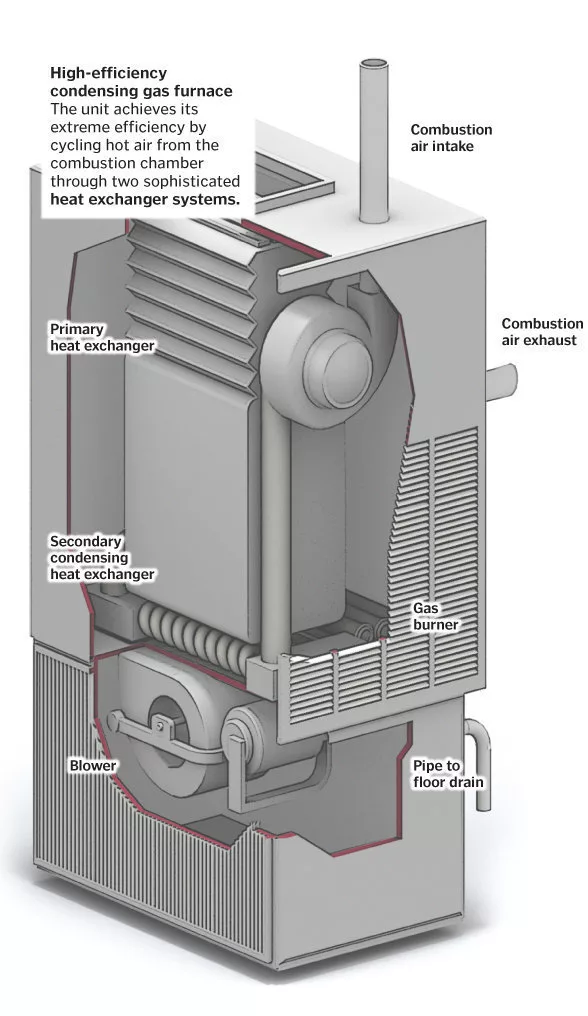
While condensing furnaces offer improved efficiency and functionality, there are common issues that may arise. Here are some troubleshooting tips to help you address these problems:
- No Heat: If your condensing furnace is not producing heat, check if the thermostat is set to the desired temperature. Also, make sure the power is on and the circuit breaker is not tripped. If the furnace still doesn’t heat up, there may be an issue with the ignition system or the gas supply. It is recommended to contact a professional HVAC technician for further assistance.
- Unusual Noises: If you hear strange noises coming from your furnace, it could indicate a problem with the blower motor, bearings, or a loose component. Try cleaning or lubricating the blower motor and tightening any loose parts. If the noises persist, it is best to consult a professional for inspection.
- Inconsistent Heating: If your condensing furnace is not providing consistent heat, check the air filters. Dirty filters can restrict airflow and impact the system’s efficiency. Replace or clean the filters regularly to ensure proper airflow. It is also recommended to check the ductwork for any leaks or blockages that may be affecting the distribution of heat.
- High Energy Bills: If you notice a sudden increase in your energy bills, it could indicate a problem with your condensing furnace. Ensure that the thermostat is not set too high and that the windows and doors are properly sealed to prevent heat loss. It is advisable to schedule regular maintenance for your furnace to keep it operating at peak efficiency.
- Strange Odors: If you detect unusual odors, such as a burning smell, turn off the furnace immediately and contact a professional. This could indicate a potential electrical or mechanical issue that requires immediate attention.
By addressing these common issues and following these troubleshooting tips, you can ensure that your condensing furnace operates efficiently and effectively, providing you with optimal comfort and energy savings.
Comparing Condensing Furnace Brands
When it comes to choosing a condensing furnace, there are several brands to consider. Each brand offers different features and benefits, so it’s important to compare them before making a decision. Here, we’ll take a closer look at some of the top condensing furnace brands on the market.
1. Brand A: Brand A is known for its high efficiency and reliable performance. Their condensing furnaces have a seamless design and incorporate advanced technology to maximize energy savings. With a focus on functionality, Brand A’s furnaces are easy to operate and offer precise temperature control.
2. Brand B: If you’re looking for an introduction to condensing furnaces, Brand B is a great choice. Their furnaces are designed with efficiency in mind and offer a range of features to improve energy usage. Brand B’s furnaces are also known for their durability and low maintenance requirements.
3. Brand C: For those seeking an efficient and environmentally-friendly furnace, Brand C is worth considering. Their condensing furnaces are designed to reduce greenhouse gas emissions and minimize the impact on the environment. Brand C also prioritizes user-friendly functionality, making their furnaces easy to operate and maintain.
When comparing condensing furnace brands, it’s important to consider factors such as efficiency, functionality, and durability. Each brand has its own unique features and benefits, so take the time to research and determine which one best suits your needs. By choosing the right condensing furnace, you can improve your energy usage and reduce your impact on the environment.
Environmental Impact and Sustainability
The efficiency and functionality of a condensing furnace make it an excellent choice for homeowners concerned about their environmental impact and looking to improve sustainability. This HVAC system is designed to maximize energy usage and reduce waste, resulting in a smaller carbon footprint.
By using the exhaust gases to preheat the incoming air, a condensing furnace can achieve an impressive level of efficiency. Unlike traditional furnaces that release hot exhaust gases into the atmosphere, condensing furnaces capture and utilize these gases to heat the home. This process not only minimizes energy waste but also reduces harmful emissions that contribute to air pollution.
Furthermore, the condensing furnace’s advanced technology allows it to operate at lower temperatures, especially during milder weather. This means that it consumes less energy overall, resulting in reduced energy bills and further minimizing its impact on the environment.
| 1. Reduced carbon footprint |
| 2. Lower energy consumption |
| 3. Minimized air pollution |
| 4. Cost savings on energy bills |
| 5. Improved sustainability |
In addition to its environmental benefits, a condensing furnace can also contribute to the overall sustainability of a home. By reducing energy consumption and lowering utility bills, homeowners can save money in the long run. These cost savings can be allocated towards other sustainable measures, such as installing energy-efficient appliances or implementing renewable energy solutions.
Overall, the efficiency and functionality of a condensing furnace make it an ideal choice for homeowners looking to minimize their environmental impact and improve sustainability. By investing in this HVAC system, you can achieve both energy savings and contribute to a greener future.
Government Incentives and Rebates
The introduction of condensing furnaces has revolutionized the HVAC industry, providing homeowners with unprecedented levels of efficiency and functionality. In recognition of this groundbreaking technology, many governments offer incentives and rebates to encourage the purchase and installation of these energy-efficient systems.
By taking advantage of government incentives and rebates, homeowners can reduce the upfront cost of purchasing a condensing furnace, making it a more affordable investment. These financial incentives often come in the form of tax credits or rebates from utility companies, and they can significantly lower the overall cost of upgrading to a condensing furnace.
In addition to the financial benefits, government incentives and rebates also serve as a way to support environmental sustainability initiatives. Condensing furnaces are designed to capture and utilize heat that would typically be lost in non-condensing models, helping to reduce greenhouse gas emissions. By encouraging the adoption of these energy-efficient systems, governments can make significant strides towards reducing carbon footprints and conserving natural resources.
It’s important for homeowners to research and understand the specific incentives and rebates available in their region. This information can often be found on government websites or by contacting local HVAC contractors. By taking advantage of these programs, homeowners can not only save money but also contribute to a greener and more sustainable future.
| 1. Reduced upfront cost of purchasing a condensing furnace |
| 2. Financial savings through tax credits and rebates |
| 3. Support for environmental sustainability initiatives |
| 4. Reduction in greenhouse gas emissions |
| 5. Conservation of natural resources |
In conclusion, government incentives and rebates play a crucial role in promoting the adoption of condensing furnaces. By offering financial incentives and supporting environmental sustainability initiatives, governments help homeowners make the switch to more efficient heating systems while contributing to a greener future.
Questions and answers:
What is a condensing furnace?
A condensing furnace is a type of HVAC system that utilizes a secondary heat exchanger to extract additional heat from combustion gases, increasing its efficiency.
How does a condensing furnace improve energy usage?
A condensing furnace improves energy usage by extracting more heat from the fuel it burns, resulting in less wasted energy and lower heating costs.
What is the efficiency of a condensing furnace?
A condensing furnace typically has an efficiency rating of 90% or higher, compared to a conventional furnace that may have an efficiency rating of 80% or lower.
What are the main components of a condensing furnace?
The main components of a condensing furnace include a primary heat exchanger, a secondary heat exchanger, a combustion chamber, a draft inducer, a gas valve, and a venting system.
Are condensing furnaces more expensive to purchase than conventional furnaces?
Yes, condensing furnaces are usually more expensive to purchase than conventional furnaces due to their advanced features and components. However, the long-term energy savings can often outweigh the initial cost.
How does a condensing furnace work?
A condensing furnace works by burning fuel to produce heat. Unlike a traditional furnace, it also has a secondary heat exchanger that is able to extract additional heat from the combustion gases. This allows the furnace to achieve a higher efficiency rating and can help improve energy usage.
What are the benefits of a condensing furnace?
A condensing furnace offers several benefits. Firstly, it is more energy-efficient than a traditional furnace, which means it can help to lower heating costs. Secondly, it produces less greenhouse gas emissions, making it more environmentally friendly. Lastly, it provides better humidity control and improved indoor air quality, resulting in a more comfortable living environment.


